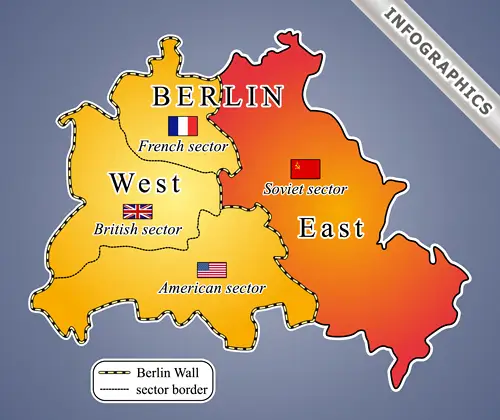Cold War

Table of Contents
Cold War Overview
The Cold War was a geopolitical and ideological conflict between the United States and the Soviet Union, along with their respective allies, from the end of World War II in 1945 until the collapse of the Soviet Union in 1991.
Political tension, military buildups, nuclear arms races, and proxy wars characterized this prolonged standoff. The term “Cold War” reflects the absence of direct military conflict between the superpowers, with the confrontation taking the form of political, economic, and ideological rivalry.
Cold War History
The Cold War was a geopolitical and ideological conflict that lasted from the end of World War II in 1945 until the collapse of the Soviet Union in 1991.
The conflict emerged primarily between the United States and the Soviet Union, representing the contrasting ideologies of capitalism and communism.
The Iron Curtain, a term coined by Winston Churchill, symbolized the ideological and physical divide between Western Europe (capitalist) and Eastern Europe (communist) during the Cold War.
The Truman Doctrine (1947) and the Marshall Plan (1948) were key U.S. policies designed to contain the spread of communism by providing economic and military assistance to countries resisting Soviet influence.
The Berlin Airlift (1948-1949) was a major Cold War event where the U.S. and its allies delivered supplies to West Berlin by air after the Soviet Union blockaded the city.
The North Atlantic Treaty Organization (NATO), established in 1949, was a military alliance formed by Western nations to counter the perceived threat of Soviet aggression in Europe.
The Korean War (1950-1953) was a proxy conflict between the U.S. and the Soviet Union, with each supporting different sides. It ended in an armistice, dividing the Korean Peninsula along the 38th parallel.
The Cuban Missile Crisis (1962) was a 13-day standoff between the U.S. and the Soviet Union over the placement of nuclear missiles in Cuba, bringing the world to the brink of nuclear war.
The policy of Mutually Assured Destruction (MAD) emerged during the Cold War, suggesting that neither the U.S. nor the Soviet Union would initiate a nuclear conflict due to the catastrophic consequences for both.
The Cold War officially ended with the dissolution of the Soviet Union in 1991. The fall of the Berlin Wall in 1989 and subsequent events marked the collapse of communist regimes in Eastern Europe, signaling the conclusion of the Cold War era.
Related Links
Berlin Airlift
Berlin Wall
Communism
Pearl Harbor